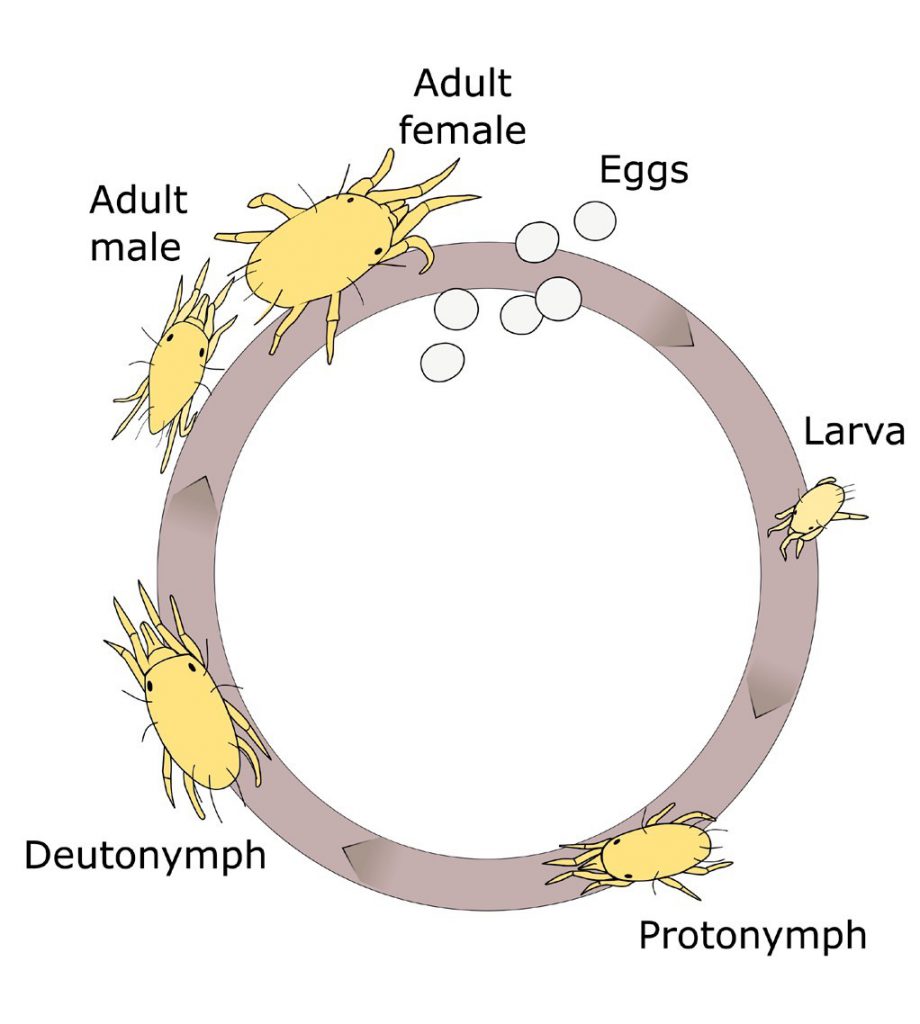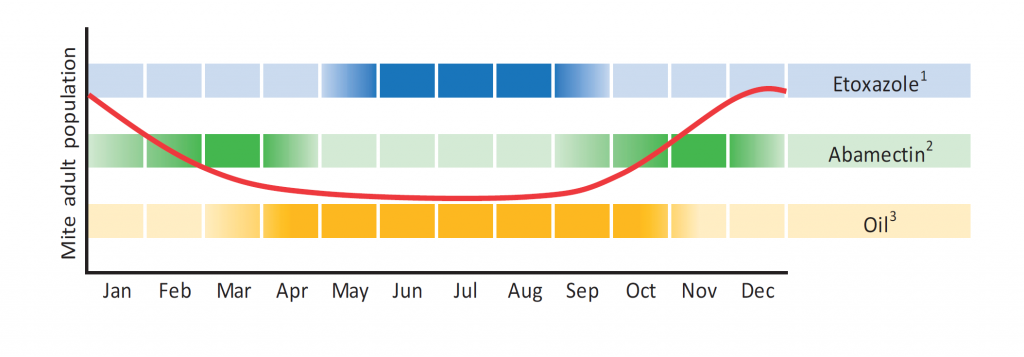This article originally appeared in the AvoScene March edition
The six-spotted mite (SSM) Eotetranychus sexmaculatus is native to central America and is thought to have been present in New Zealand since at least the 1950s.
SSM levels can fluctuate through the season, so understanding its lifecycle and population dynamics can significantly help with decisions around when and what you might spray.
Rising temperatures significantly accelerate egg to adult development, so adult populations generally increase in spring and decline from January to March. Being able to predict patterns of egg hatch and seasonal abundance is therefore useful when determining the optimum time to apply control sprays.
Mites are always present in orchards and they hide very effectively within the canopy, producing multiple generations per year. Their distribution tends to be very patchy within an orchard and they do not move far unless they are disturbed by activity such as pruning.
An orchard with high levels of SSM, together with susceptible trees, will often require the use of targeted miticides to prevent defoliation. ‘Susceptible trees’ relates to the contributing factors that may predispose avocado trees to SSM population outbreaks including nutrient deficiency, heavy flowering, drought, high nitrogen levels or an abundance of alternative host plants.
When Paramite (etoxazole) was introduced to New Zealand in 2011 for the control of SSM mite in avocados, it was a world-first registration. It quickly gained popularity and a key position in the avocado industry spray programme. Etoxazole is an insect growth regulator with translaminar activity. It is important however to understand how the product works to get the best out of the single application available to growers each year.

The specificity of etoxazole against spider mites does make it an excellent choice for IPM pest management. It has low toxicity to predator mites and is very safe for bees and ladybirds, although spraying while bees are active in your orchard is never recommended as the physical impact of the spray water alone can be detrimental to bees.
Etoxazole is reported to have translaminar activity, meaning the product will move through the leaf from contact point of the spray on the upper surface to the under surface of even mature leaves where mites are feeding. Other agrichemicals such as abamectin have more activity when immature leaf is present. Due to the residual activity of etoxazole on mature leaf, the product has an extended withholding period for some export markets. Etoxazole has been found to best suit winter use periods. Abamectin, with a shorter withholding period and good activity when flush is present, is often a more suitable product closer to harvest.
Insect growth regulator sprays are very effective yet generally slower acting than knock down chemicals. They work either by mimicking key growth hormones or directly affecting cuticle formation or other essential growth processes. Often these chemicals will inhibit insect moulting, some can kill eggs directly and may even sterilise adults so laid eggs will not hatch.
The range of activity of etoxazole against the whole lifecycle greatly extends the period of effective control compared to other miticides products. It stops mite population development in its tracks. It is effective
at all stages of the mite lifecycle. It is ovicidal, having excellent contact activity against eggs, and inhibits the moulting process all of the larvae and nymphs stages of mite development. It has limited activity on adults but sterilises adult females. Adults will be present for up to a couple of weeks after application, feeding and causing damage.
Etoxazole use is limited to one application per year to ensure we do not get resistance. However, a single application is not persistent enough to control multiple generations of mites; often control is seen over a couple of months, but it is not a full year solution and a full season programme with other agrichemicals is required.
A miticide programme over the year should therefore include the use of agrichemicals with other modes of action such as mineral oil or abamectin. Where there are high populations of adults, incorporating a knockdown miticide into the spray programme is also recommended.
Use of a product containing mineral oil or abamectin, 14 days prior to using etoxazole, may extend the period of control due to their knockdown effect on adults. Note AvoGreen monitoring does not distinguish between adult SSM and nymphs.
Coverage is still very important as translaminar activity is not systemic, and most of these products do not move around the entire tree. No oils nor other surfactants are required to enhance uptake of etoxazole and no trial work has demonstrated any benefit from the addition of oil or surfactants, and in some cases this may extend the residue decay timelines.

Iain Latter R & D Manager, Grochem
Glenys Parton, Industry Systems Manager, NZ Avocado
Brad Siebert, Biosecurity and Programme Manager, NZ Avocado